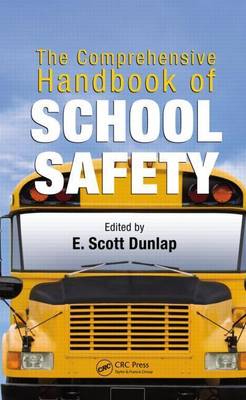Occupational Safety & Health Guide
2 total works
In most schools you will probably see one, if not all of the following:
Metal detectors to prevent handguns and other weapons from being brought onto school propertyStudents in standardized uniforms to prevent the appearance of gang affiliationsPolice officers patrolling the property to deter violent activity as well as respond to incidents
Such evolutions have forever changed how we view the safety of our students. However, the phrase "school safety" goes beyond these issues of security put in place to protect students, faculty, and staff. Environmental factors also play a role. The Comprehensive Handbook of School Safety expands the dialogue on school safety to comprehensively address the spectrum of safety risks such as bullying, fire safety, playground and transportation safety, and more. Based on research and practical experience, it helps school administrators develop appropriate programs that protect all individuals from harm.
Author E. Scott Dunlap brings his experience in OSHA and DOT compliance, behavior-based safety, and organizational safety culture to bear on the issue of school safety. He presents school safety from a holistic perspective and details vulnerability assessment tools and incident investigation forms to help schools develop a comprehensive safety program. By focusing on this range of issues, the book's dynamic perspective puts the keys to achieving an effective safety program within easy reach.
As a critical function in monitoring workplace safety, loss control auditing provides an organizational assessment of safety program performance in relation to regulatory requirements and company policies. Principles of quality management dictate that measurement of an activity receives organizational attention and provides an excellent tool for communicating performance to management. A comprehensive audit, rather than individual metrics such as injury rate, helps to determine which aspects of a safety program are functioning well and which ones have room for improvement. Loss Control Auditing: A Guide for Conducting Fire, Safety, and Security Audits is a one-stop resource for both developing and executing a loss control audit program.
Written for professionals in the fire service, loss prevention, and safety management as well as those studying the fields, this reference addresses loss control auditing from the perspectives of workplace safety, physical security, and fire risks. The text focuses on the three core areas of an audit: documentation review, physical inspection, and employee interviews. It also presents a three-phase model-pre-audit, audit, and post audit activities-which can be used for all three core areas. It includes detailed information to assist in the development of an effective audit program.
The author discusses the foundational elements of an audit program, the written audit program and the audit protocol. Systemic auditing issues of audit scoring, auditor selection and training, audit logistics, and audit frequency are also addressed. The final section of the book discusses the opportunities that can arise in conducting an audit, including how an audit can be used as a training tool and the importance of involving employees in the audit process. The application of the information presented in this volume is facilitated by representative case studies included at the end of each chapter. An up-to-date reference, this text is unique in the depth of material presented and provides an excellent resource on how to develop and execute a loss control audit program.

